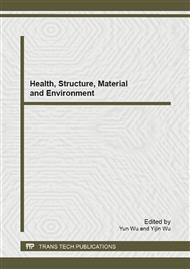p.282
p.286
p.291
p.297
p.303
p.308
p.312
p.316
p.322
Isolation of a Novel Chiral Phytoestrogen Breviflavone B from Epimedium Herb by a New Approach of Liquid Chromatography
Abstract:
Breviflavone B is a novel chiral phytoestrogen that mimics the biological functions of 17β-estradiol (E2), an estrogen which is naturally produced in our body. It has exhibited a much higher estrogen receptor (ER) bioactivity than E2 or other phytoestrogens. Breviflavone B specifically activates ER at a low dose without activating other steroid receptors, and inhibits estrogen-stimulated breast cancer cell proliferation at high doses, making it a potential treatment option for breast cancer patients. In this report, a new liquid chromatography aprroach has been developed to isolate Breviflavone B from Epimedium Brevicornum herbal extracts. After passing through DIAION HP20 resin, the ethanolic extract of Epimedium Brevicornum was firstly fractionalized by a Diol column, then further separated by a C18 column using preparative HPLC, and finally purified by an ODS-MCR-HPS column in HPLC under gradient mode. In each stage of separation, the ER bioactivities of the each fraction were measured by estrogen receptor-driven reporter gene bioassays to guide the chromatographic fractionations. The results showed that the new combination of Diol and C18 and ODS-MCR-HPS column chromatography provided better separation selectivity than our previously-reported C18 column chromatography for isolation of Breviflavon B from Epemidium herbs. Pure Breviflavon B was successfully isolated from the ethanolic extract of Epimedium Brevicornum herb via this new approach of chromatographic fractionations guided by the bioassays.
Info:
Periodical:
Pages:
303-307
Citation:
Online since:
February 2013
Keywords:
Price:
Сopyright:
© 2013 Trans Tech Publications Ltd. All Rights Reserved
Share:
Citation:


